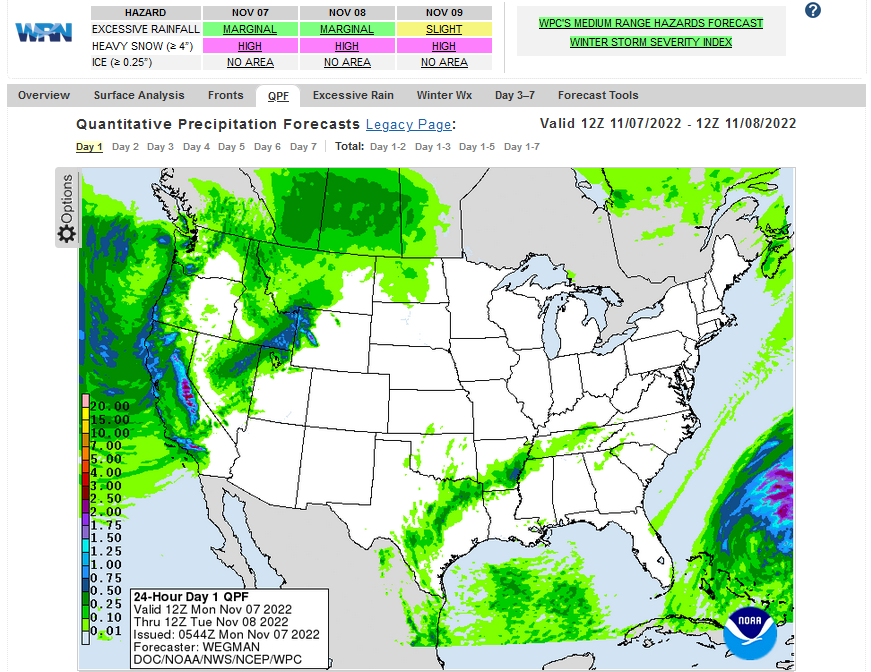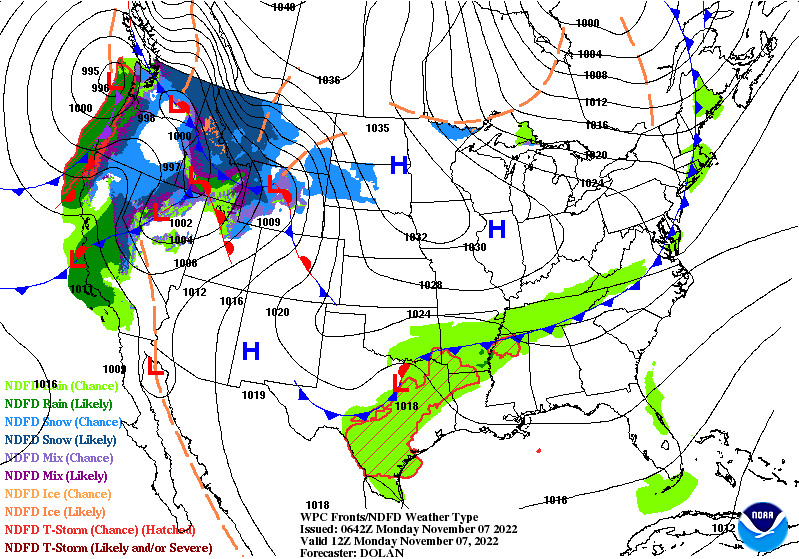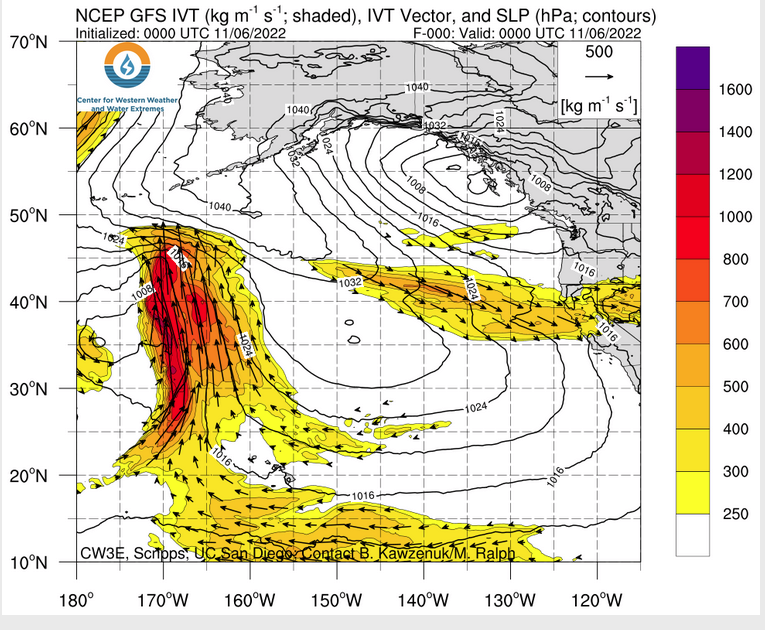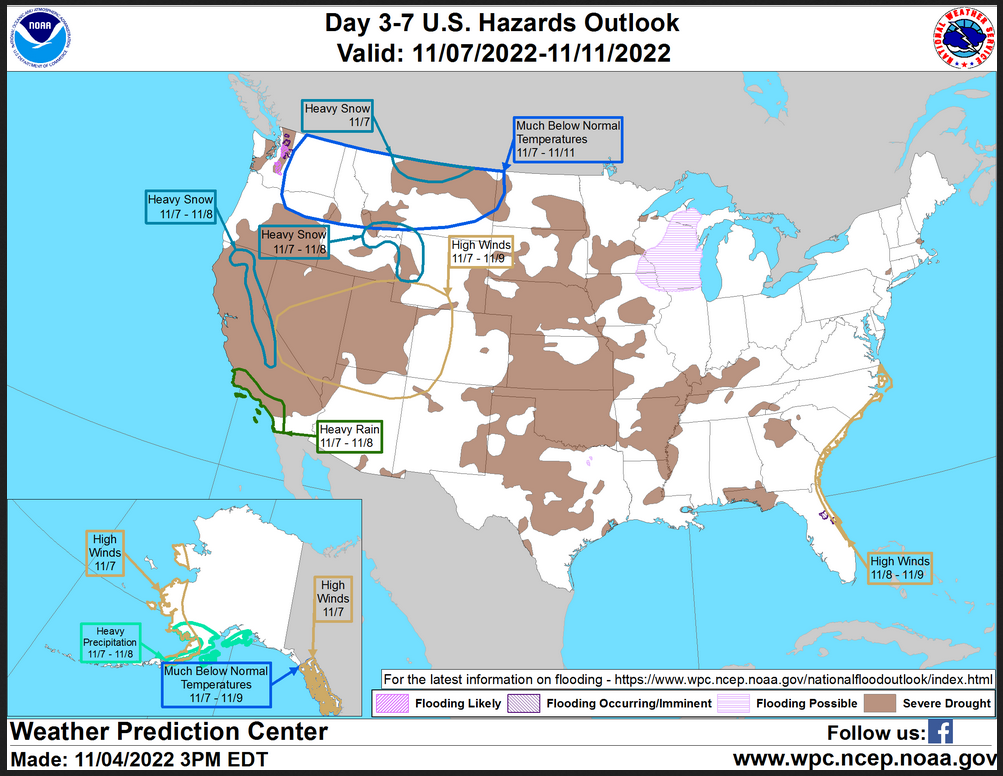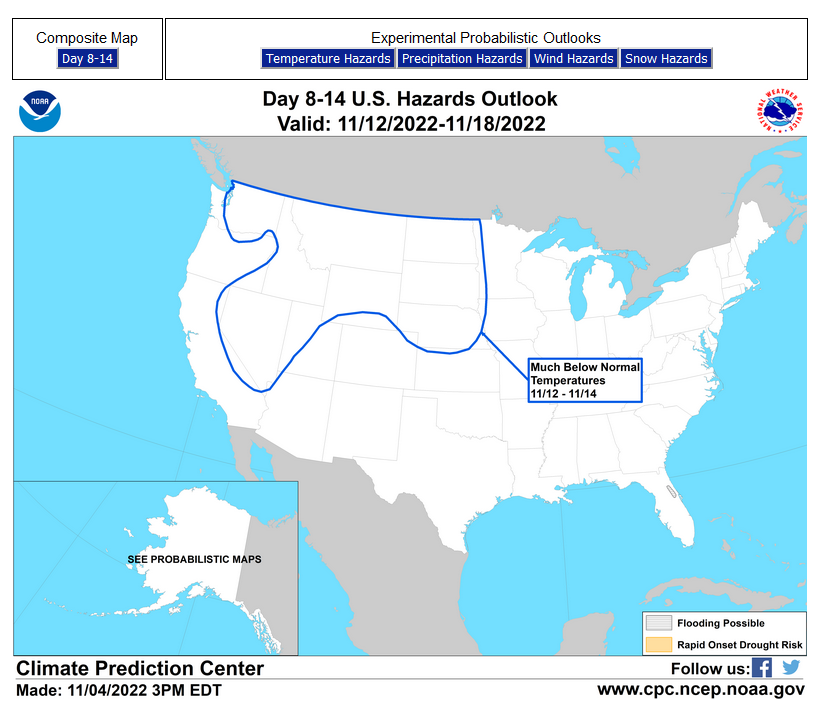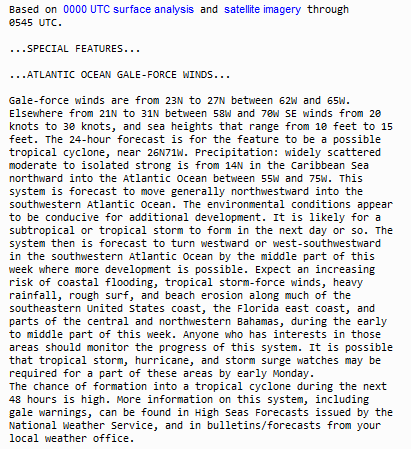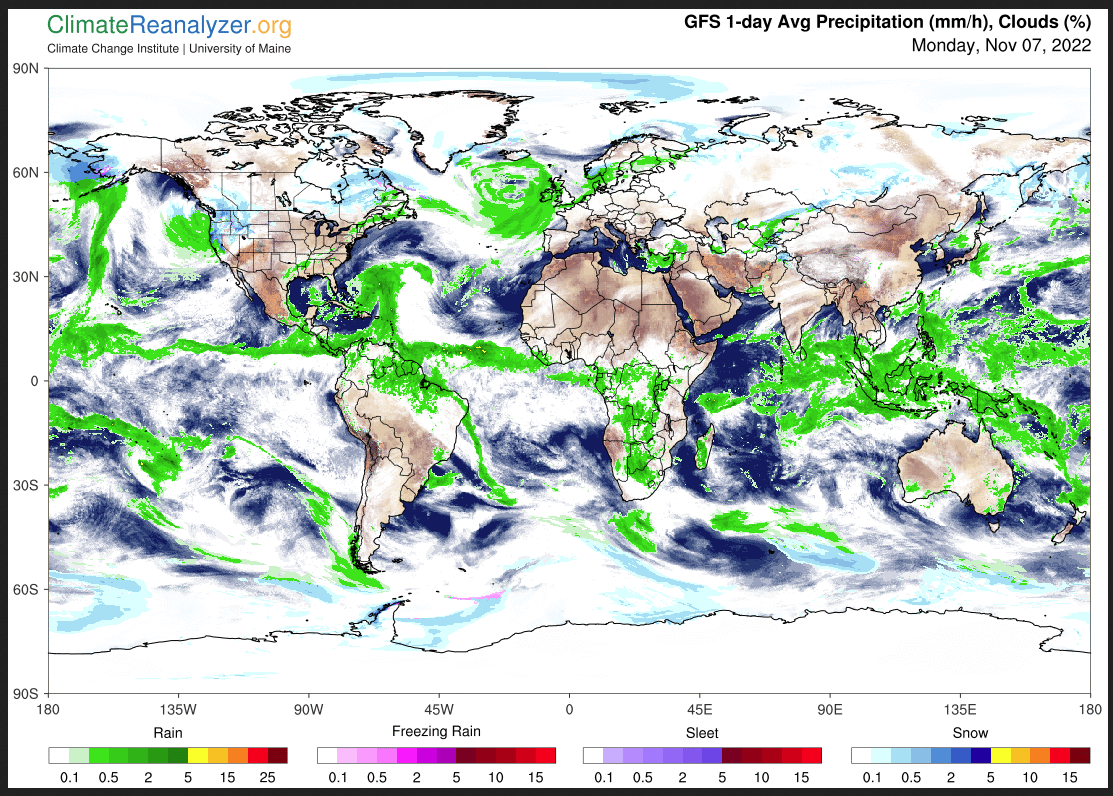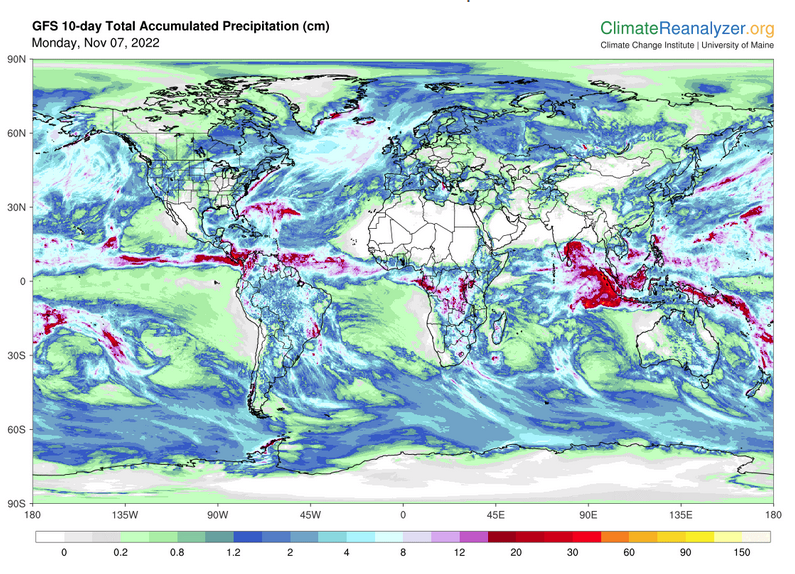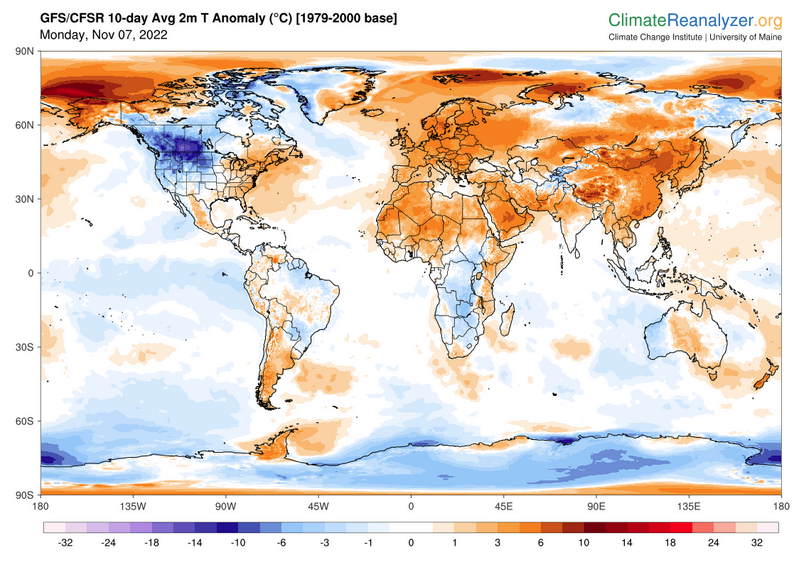Here is what we are paying attention to this evening and the next 48 hours from this evening’s NWS Forecast.
...Moderate to Heavy coastal rain and mountain snow expected across the West... ...Above normal temperatures continue in the East today, cooler air expands across the West...
Continuation of the NWS Short Range Forecast (It is updated twice a day and these updates can be found here.
Calm weather is expected in the eastern U.S. through the short term period. The lingering cold front along the East Coast is expected to finally push offshore of the Northeast today while the tail lingers over the Southeast and South. The frontal boundary has significantly weakened with little to no impacts expected other than a chance of showers and thunderstorms in the South. A strong high pressure ridge will build over the eastern U.S. today and Tuesday, which will cause the remaining portion of the boundary to dissipate. In contrast to the calm in the East, unsettled weather will continue across the West. A low pressure system will slowly slide down the coast, continually pushing moisture over the region. Moderate to heavy rainfall is expected over coastal and low elevation areas and moderate to heavy mountain snow is expected over mid and high elevation areas. Anomalous moisture will result in efficient rain rates that could lead to isolated flash flooding in some areas. There is a Slight Risk of Excessive Rainfall (level 2/4) in effect for portions of southwestern California on Tuesday where flash flooding may occur, especially near steep terrain. While low pressure remains along the coast a series of cold fronts will move across the western U.S. and cause widespread winter weather at mid and high elevations. Heavy mountain snow is expected at higher elevations in the western mountains each day. A strong cold front will push out of the west into the northern and central Plains Tuesday into Wednesday, spreading winter weather into the Plains. Ahead of this front, breezy and dry conditions will result in Elevated fire weather conditions for portions of the Dakotas and Nebraska today. Temperatures will drop in the West behind the cold fronts, and below normal temperatures are expected to continue through the week. High temperatures are forecast to reach 15-25 degrees below normal in some areas with the highest departures from normal expected in portions of Montana. Southerly flow across the Central U.S. ahead of the emerging frontal system will result in above normal temperatures for much of the region on Wednesday, but the region will cool post frontal passage later this week. Above normal temperatures are also expected to continue in the East today with highs in the upper 60s to lower 80s. Temperatures in the East will return to seasonable values Tuesday and Wednesday. Near the end of the short term period a tropical system is expected to approach the CONUS from the southeast, which could impact to the portions of the Southeast later this week.
Current forecast of heavy precipitation (Updates can be found HERE)
Maps that relate the forecast to geography can be found by clicking Here for Day 1 and Here for Day 2.
Here is a 60-hour animated forecast map that shows how the short-term forecast is expected to play out
If it needs to be updated click here.
ATMOSPHERIC RIVERS
Click HERE to update. Here is some useful information about Atmospheric Rivers.
HAZARDS OUTLOOKS
Click here for the latest complete Day 3 -7 Hazards forecast which updates only on weekdays. Once a week probably Monday or Tuesday I will update the images. I provided the link for readers to get daily updates on weekdays. Use your own judgment to decide if you need to update these images.
Worldwide Tropical Forecast
(This graphic updates on Tuesdays) If it has not been updated, you can get the update by clicking here This is a new approach and covers weeks 2 and 3 not weeks 1 and 2. It has more information but I am having trouble getting used to it. As usual, it comes with a discussion which is below
Detailed Maps and Reports for the Western Atlantic and the Pacific Oceans
Below are four maps that summarize the situation for the Atlantic, Eastern, Central Pacific, and Western Pacific. Additional information can be accessed by clicking HERE
First the Atlantic
Click to view the forecast map and have access to additional information https://www.nhc .noaa.gov/gtwo.php?basin= atlc&fdays=5
Then Eastern Pacific
Click to view the forecast map and have access to additional information https://www.nhc.noaa.gov/gtwo.php?basin=epac&fdays=5
Then Central Pacific
Click to view the forecast map and have access to additional information https://www.nhc.noaa.gov/gtwo.php?basin=cpac&fdays=5
And the Western Pacific
Click to view the forecast map and have access to additional information https://www.metoc.navy.mil/jtwc/jtwc.html
Some Intermediate-Term Outlooks
Links to “Outlook” maps and discussions for three time periods. Days 6 – 10, Days 8 – 14, and Weeks 3 and 4. An outlook differs from a forecast based on how NOAA uses these terms in that an “outlook” presents information from deviation from normal and the likelihood of these deviations.
You have to click on the links because they do not update automatically and I do not want to have stale images in the article. But it is not difficult to click on a link and you get a large image plus a discussion. On Fridays in a separate article, we will show the images and provide a link in this article that article. But remember what you will see is the images as of Friday. But here you can get the current images simply by clicking on them. Then hit the return arrow at the upper left of your screen to return to the article. You will not find this information easily anywhere else.
Right now you can find these maps here (We show them every Friday there but you can click above and find them).
Worldwide Weather
Below is the current or short-term precipitation forecast which can be updated by clicking HERE Additional maps can be obtained H ERE.
Month to Date Information
Month to date Temperature can be found at https://hprcc.unl.edu/products/maps/acis/MonthTDeptUS.png
Month to date Precipitation can be found at https://hprcc.unl.edu/products/maps/acis/MonthPNormUS.png

